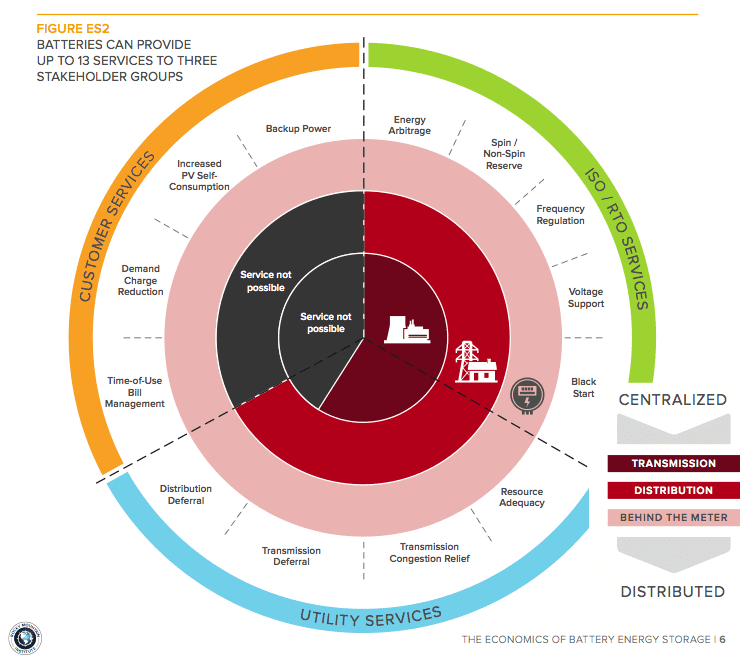Economics of Battery Energy Storage: New Report
2015 has been the ‘Year of The Battery,’ but it’s time to focus less on cost and more on the value
In many ways, 2015 has been “The year of the battery.” Consider the excitement around Tesla’s Powerwall, or battery energy storage’s 600 percent Q2 growth over Q1, or one of the world’s largest utilities recently proclaiming that batteries will obviate the need for any new gas peaker plants in the U.S. post-2020. But the most important and exciting news around batteries still lies ahead.
To date, the attention has been on cost—how cheap batteries have gotten, and how fast they’ve done so. Now, a new RMI report shifts the focus critically to the other part of the battery equation: value. The report found that batteries can reduce grid costs and customer bills, increase the resilience of the grid, and support a largely renewable electricity system. All that value is available, if we make some critical adjustments.
Batteries are usually deployed today for single, primary uses: think demand charge reduction in California or frequency regulation on PJM’s wholesale electricity market. These single use cases are usually compared against the relative cost of a battery. This sells batteries short: comparing one use case against the cost of a battery is like comparing the cost of a Swiss Army knife to the value you can get from just using the blade. A battery is capable of delivering many services with the same device, just like a Swiss Army knife. But right now folks are buying the knife and only using the blade when they could also be using the pliers, screwdriver, and so on.
So far, batteries deployed to reduce demand charges or defer traditional utility investments aren’t typically used to deliver multiple services. This means batteries might only be used for 1–50 percent of their useful life. And yet, a battery could be used to deliver other services for the other 50–99 percent of its useful life and get paid to do so. Would you build a hotel and only sell 1–50 percent of the rooms? Neither would we. So why do it with batteries?
In our new report, The Economics of Battery Energy Storage, we asked some important fundamental questions:
What services can batteries provide to the grid?
Where on the grid can batteries deliver each service?
How much value can batteries generate when they are highly utilized and services are stacked?
What regulatory barriers currently prevent single energy storage systems or aggregated fleets of systems from providing multiple, stacked services to the grid?
THIRTEEN SERVICES FOR CUSTOMERS, UTILITIES, AND THE GRID
Our research indicates that batteries, when placed behind the meters of residential, commercial, or industrial customers, can deliver 13 services to the electricity system at large. The figure summarizes these services and the stakeholder group that accumulates the lion’s share of each benefit (more detail on these services can be found in our full report).




